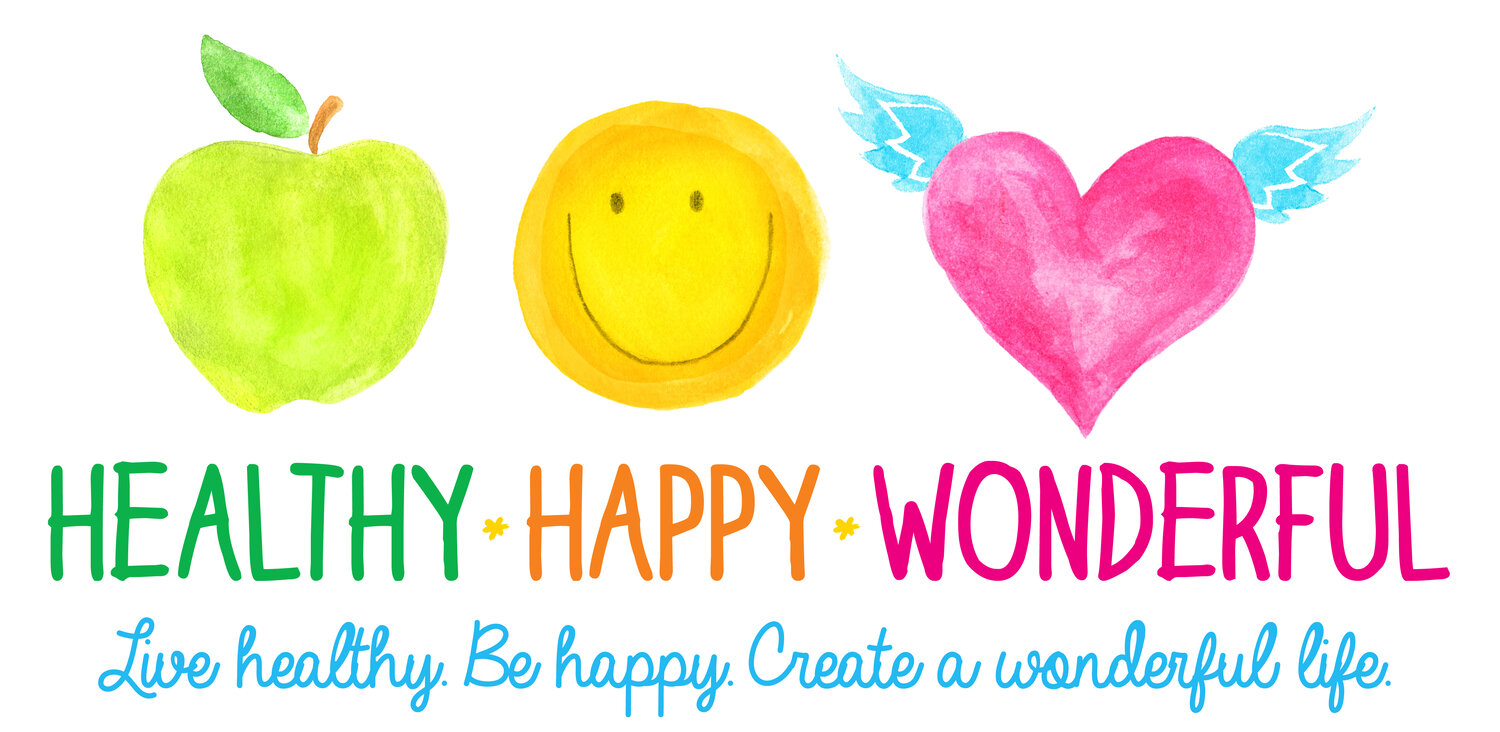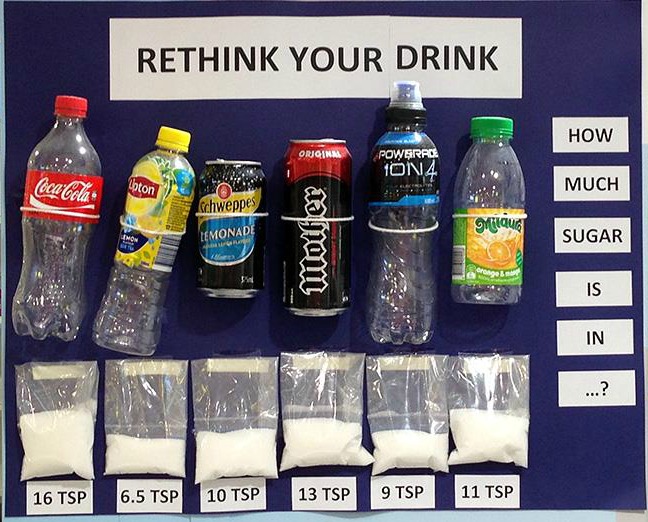Get Smart About Sugar!
/Australians are eating a frightening amount of sugar. More than half of us are consuming more than the amounts recommended by the World Health Organisation. And the scary thing is that most of us don't even realise how excessive (and potentially dangerous) our sugar intake is.
That's largely because more than 80% of the sugar we are consuming is contained in processed foods and beverages.
Consuming excess refined sugars can be damaging to our health. Sugar adds flavour and energy to foods, but is bereft of healthy micronutrients. So you are much more likely to be pushed into Overnutrition (if this is a term you are unfamiliar with, check out this post!) and gain weight. And these foods can displace more nutritious choices from our daily diet, which can lead to low energy levels and micronutrient deficiencies (have you heard of the term "overfed and undernourished"?). And let's not forget about tooth decay!
But aggressively cutting out all foods that naturally contain sugars (like fruit) can be equally damaging. Concerns that legitimately relate to refined sugars added to processed foods and beverages have also unfortunately been extended to sugars that naturally occur in foods that are actually really healthy for us, like fruit. I wrote about this HERE.
So to help you get smart about sugar, here are my top tips:
1. Understand the difference between INTRINSIC and ADDED sugars
INTRINSIC SUGARS are the sugars that are naturally found in whole, unprocessed foods. Like the lactose in milk and yoghurt or the fructose in fresh fruit. We need to stop demonising foods that naturally contain sugars. The sugars in these natural unprocessed whole foods come packaged with other healthy macro- and micronutrients and our bodies know how to process them. I have absolutely no problem with consuming reasonable amounts (ie. not bingeing on) foods that naturally contain various types of intrinsic sugars. Fruits, veggies, dairy (if you eat and enjoy it) - these foods all contain sugars (as well as fibre, and lots of healthy micronutrients!) and I'm never going to tell you to cut these foods out unless you have a diagnosed illness or intolerance.
ADDED SUGARS are the sugars we need to get wise to. And they are the main source of sugar in our diet. They are not naturally found in whole, unprocessed foods.
IMAGE CREDIT: WWW.CHOICE.COM.AU/ADDEDSUGAR
The World Health Organisation recommends that we limit added sugars to about 10% (and ideally 5%) of our daily energy intake. That’s about 6–9 teaspoons of added sugars a day. But added sugars are everywhere! Remember, 80% of the sugar we consume is contained in processed foods and beverages. Sugar is even in foods we would not expect to contain sugar like sauces, soups, salad dressings and even breads. These added sugars bring no additional micronutrients into the foods they are added to, and are designed to make processed foods taste more palatable - and also to cause our palates to be habituated to high sugar levels so that foods that are unprocessed or naturally lower in sugar are less appealing to us.
2. Say no to sugary sodas and soft drinks
I wrote about this HERE. Adding just one can of sugary soda a day to your normal diet has been estimated to result in a weight gain of almost 7kg! And a study released late last year found that drinking just two sodas per day can double your risk of type 2 diabetes. So cutting them out should be a no-brainer.... Swap sodas and soft drinks for water or herbal teas. And if you find plain water a little boring, add a squeeze of lemon or lime, a slice of orange or cucumber, or a sprig of mint!
THIS WAS ON DISPLAY AT A LOCAL PHARMACY BACK IN JANUARY. SCARY, HUH!?
3. Breakfast better!
Breakfast cereals can be so high in sugar. So if you eat cereal for breakfast, check how much is in there, and switch to a low-sugar cereal or have a savoury breakfast.
4. Ditch flavoured yoghurts
So many flavoured yoghurts, even the "healthy" ones, contain a crazy amount of sugar. Buy plain yoghurt and flavour it yourself with fresh fruit, nuts and a little stevia, honey or maple syrup - if you really need it. Taste it first before adding sweetener. I find that fruit usually adds enough sweetness for me.
5. Read the labels at the supermarket
80% of the sugar we eat is contained in processed foods and beverages, including foods you wouldn't expect to contain sugars like sauces and in ready meals. And to make things more complicated, there are so many different names for sugar. Processed food companies just lurve to get creative about what they call sugar on food labels to make you feel better about buying and consuming their product. So make sure you know what they are, and become a detective at the supermarket! Here are a list of all the different names for sugar that you might find on a food label:
Image credit: www.choice.com.au/addedsugar
A good rule of thumb is to look at the first 3-4 ingredients and if sugar (in any of its forms) appears then this means that sugar is a major ingredient, and you should probably find a healthier alternative. Or better still....
6. JERF!
Don’t know what JERF is? It stands for Just Eat Real Food and it is one of my mantras! Because 80% of the sugar we eat is contained in processed foods and beverages, simply taking a big step back from packaged and processed foods and just eating wholesome unprocessed REAL FOODS can mean a huge reduction in the amount of added sugar (and salt!) in our diet. Processed food are highly refined, energy dense but bereft of micronutrients, so give them a wide berth and JERF!
7. Snack smarter!
So many of us have a habit of reaching for sugary snacks like cookies, muffins or muesli bars between meals. When we do this we missing out on an opportunity to choose something more nutritious and we are short-changing our health. Sugary snacks are just a habit, and habits can be changed. I wrote HERE about learning the difference between a snack and a treat, and how to make better snack choices. Even so-called "healthy" snacks like muesli bars can be extremely high in sugar (and fat!). Save cookies and cakes for occasional "sometimes food" treats rather than everyday snacks. Swap, cakes, cookies, muffins and other sugary refined carb baked goods for a piece of fruit and handful of nuts.
8. Bake better!
If you are a keen home baker, try experimenting with adding less sugar to your fave cakes and cookie recipes. Depending on the recipe, you can often cut between 25% to 50% of the added sugar without ruining the taste. With a little experimenting you will be surprised how well this works. And while you're at it, try some healthy baking swaps like bananas, apples or even using prunes! These will add sweetness along with fibre, vitamins, minerals and phytonutrients! Like in this recipe!
9. Don't kid yourself that you are going "sugar free" if you regularly use rice malt syrup or glucose
I know there are a few unqualified "wellness gurus" out there who have put all the blame on fructose, and consider themselves "sugar-free" if they avoid fructose and eat sweet snacks and desserts using rice malt syrup or glucose. Newsflash: These are still sugars and will still spike your blood sugar and insulin levels, place you at risk of cavities and push you into overnutrition if you eat too much.
10. Don't cut out fruit!
I wrote about this HERE. I DO NOT want you to stop eating fruit! Fruit contains vitamins, minerals, fibre and phytonutrients. There is a HUGE difference between whole, natural fruit and processed foods and sodas sweetened with refined high fructose corn syrup. So eat and enjoy 2 pieces of fruit a day, and if you are active eat up to 4 pieces a day.
REFERENCES:
World Health Organisation, Guideline: Sugars intake for adults and children. Geneva: WHO; 2015.
Australian Bureau of Statistics, 2015, Australian Health Survey: Consump on of Added Sugars 2011-2012
Peters SA, Dunford E, Jones A, Ni Mhurchu C, Crino M, Taylor F, Woodward M, Neal B. Incorporating Added Sugar Improves the Performance of the Health Star Rating Front-of-Pack Labelling System in Australia. Nutrients. 2017 Jul 5;9(7):701.
















